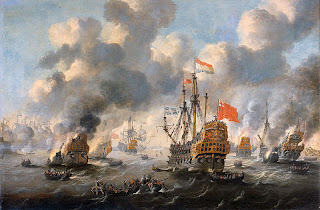King Cetshwayo, ruler of the Zulus in the late 1870's, was a confirmed Anglophile, saying he revered Queen Victoria like a mother, but some unscrupulous expansionists in London and South Africa wanted to get their hands on his lands and in 1879 they managed to foment a war.
An army of 7,000 crossed into Zululand, but the British commander, Lord Chelmsford, was afraid the enemy would try to avoid giving battle, and he kept dividing up his forces. On January 22, he left behind just 1,250 soldiers at his main camp at Isandlwana.
Astonishingly, the Zulus had managed to hide an army of 20,000 or more, and they fell on the British, who had neglected to fortify their position, and virtually annihilated them. When the news reached England, people thought at first that it must be a hoax – a British army with modern rifles and artillery destroyed by tribesmen armed mainly with spears!
But Prime Minister Benjamin Disraeli had to admit to Parliament that there had indeed been a ‘terrible military disaster’. The full story is in Britain’s 20 Worst Military Disasters, and there are only five shopping days to Christmas!













